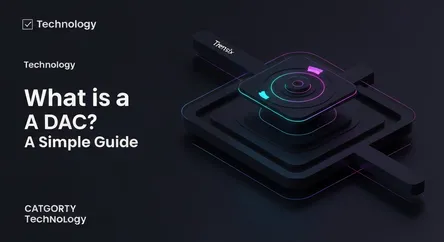Technology
What is a DAC? A Simple Guide

Unlock high-quality sound. A DAC (Digital-to-Analog Converter) transforms digital audio files from your device into analog signals for headphones.
What is it?
A DAC, or Digital-to-Analog Converter, is a device that translates digitally stored information into an analog sound signal. Your phone and laptop have built-in DACs, but their quality varies. The digital audio on your device, like an MP3 or streaming file, is just a series of 1s and 0s. The DAC reads this binary code and converts it into an analog wave that your headphones or speakers can play as sound. Think of it as a translator for your music, turning a digital language into a sound you can hear and appreciate.
Why is it trending?
The trend towards high-resolution audio streaming from services like Tidal and Apple Music Lossless has put a spotlight on DACs. Standard DACs built into most devices often can't handle the data rate of these high-fidelity files, becoming a bottleneck for audio quality. As people invest in better headphones and seek a superior listening experience, external DACs have become a popular upgrade. They offer more precise conversion, resulting in clearer, more detailed sound, revealing nuances in music that were previously hidden.
How does it affect people?
For the average listener, an external DAC can make their favorite music sound significantly better, adding depth and clarity. For audiophiles, it's an essential component for achieving the highest possible sound fidelity. It allows them to bypass the often-mediocre internal hardware of their source devices and hear their music exactly as the artist intended. By improving the quality of the audio signal at its source, a dedicated DAC elevates the entire listening experience, making music more immersive and enjoyable, whether at home or on the go.